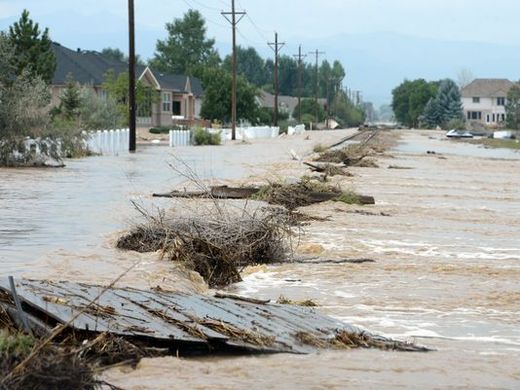
Colorado is no stranger to devastating and deadly flash floods, due to a lethal combination of geography and meteorology. When unusually heavy rain falls across the region, narrow canyons and steep mountains help funnel raging torrents of water down into the heavily populated foothills to the west and north of Denver.
One of them, the notorious "Big Thompson" flash flood of July 1976, killed at least 144 people north of Boulder. It caused "the worst natural disaster, in terms of documented lives lost, in Colorado state history," according to Boulder's Flood Safety Education Project website.
Boulder, specifically, is considered to be Colorado's "most at risk" city in terms of potential flood damage, notes Weather Underground weather historian Christopher Burt. This is because it rests against the mouth of a canyon (the Boulder Canyon) from which a creek (the Boulder Creek) bisects the heart of the town.
This week's rains and floods in Colorado were the result of a strong, slow-moving storm at upper levels of the atmosphere located to the west of the state, according to meteorologist Jeff Masters with the Weather Underground. The storm got trapped to the south of an unusually strong ridge of high pressure parked over Western Canada, he says.
The circulation around the storm tapped a plume of extremely moist, monsoonal air from Mexico that pushed up against the mountains and fell as rain on the already saturated ground, soaked from rain earlier in the week, Masters adds.
How much rain? From the afternoon of Sept. 9 through midday on Sept. 13, 14.62 inches of rain fell in Boulder. Average September rainfall in Boulder is only 1.63 inches, according to Weather Channel meteorologist Jon Erdman, adding that Boulder picked up almost nine times its average September monthly rainfall in almost four days.
Finally, winds 15,000 feet above the ground were generally blowing from southeast to northwest and were light, Erdman says. This allowed the rain and thunderstorms to linger over the foothills and Front Range urban corridor.
"This is a classic scenario for major flooding in northern Colorado," he says.



Reader Comments
to our Newsletter